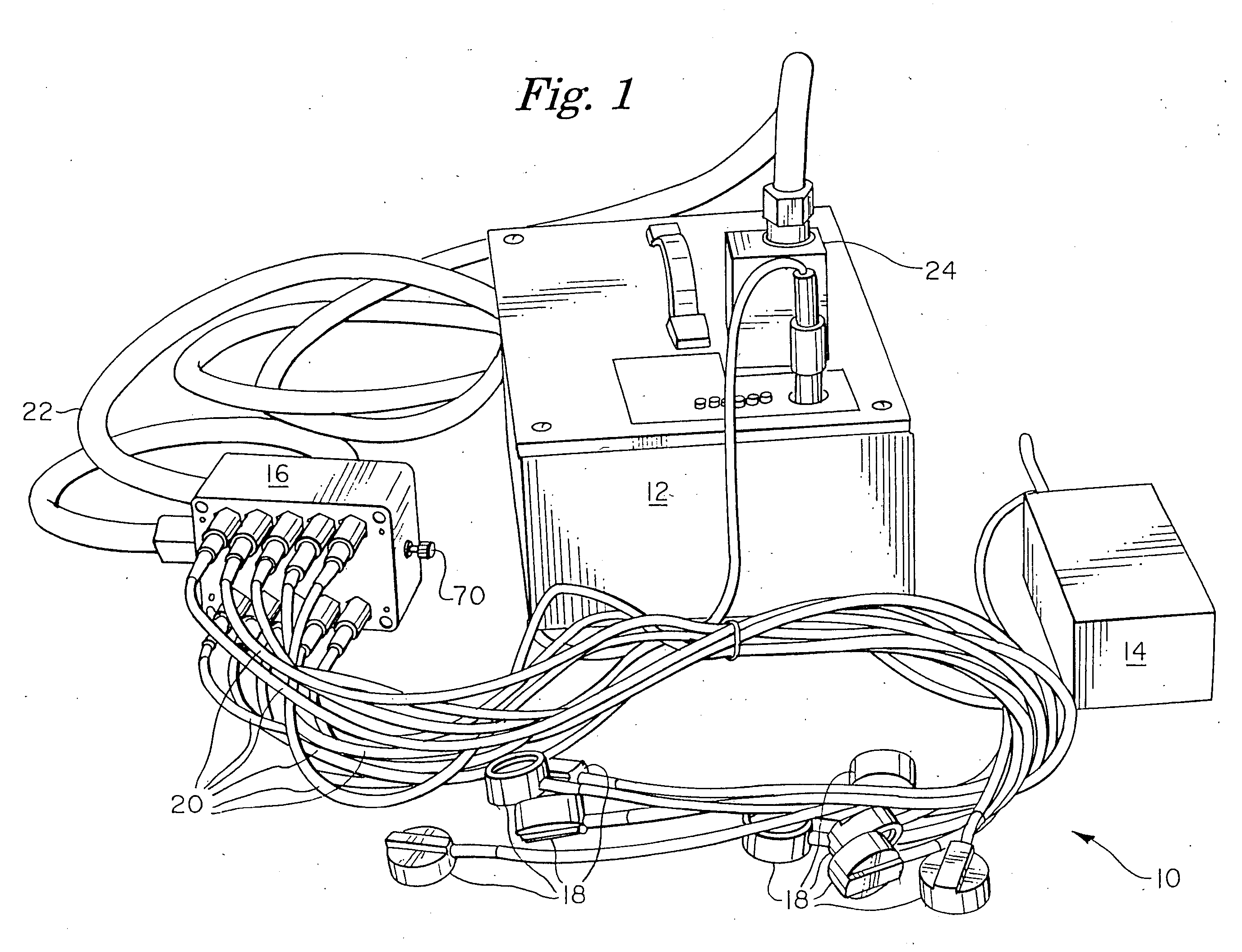Venturi ECG electrode system
a technology of ecg electrodes and venturi, which is applied in the field of physiological monitoring electrode systems, can solve the problems of increasing the cost of the overall procedure, affecting the patient's overall procedure, so as to achieve the effect of less waste, low maintenance and large siz
- Summary
- Abstract
- Description
- Claims
- Application Information
AI Technical Summary
Benefits of technology
Problems solved by technology
Method used
Image
Examples
Embodiment Construction
[0054] To assist in an understanding of the invention, a preferred embodiment or embodiments will now be described in detail. Reference will be frequently taken to the Figures, which are summarized above. Reference numerals will be used to indicate certain parts and locations in the Figures. The same reference numerals will be used to indicate the same parts or locations throughout the Figures unless otherwise indicated.
[0055] With respect to FIGS. 1 and 2, an improved ECG electrode system 10 is shown having a pump unit 12, a charger unit 14, a distribution unit 16, a plurality of electrodes 18, a plurality of electrode tubes 20, a connection hose 22, a combination plug 24 and recorder / monitor connector 25, and a jack box 94, discussed in more detail herein. The following discussion will describe each part in detail, including how the individual parts interact during operation.
[0056] With respect to FIGS. 2 and 3, an improved pump unit 12 is shown having a pump 26, batteries 29, a...
PUM
 Login to View More
Login to View More Abstract
Description
Claims
Application Information
 Login to View More
Login to View More - R&D
- Intellectual Property
- Life Sciences
- Materials
- Tech Scout
- Unparalleled Data Quality
- Higher Quality Content
- 60% Fewer Hallucinations
Browse by: Latest US Patents, China's latest patents, Technical Efficacy Thesaurus, Application Domain, Technology Topic, Popular Technical Reports.
© 2025 PatSnap. All rights reserved.Legal|Privacy policy|Modern Slavery Act Transparency Statement|Sitemap|About US| Contact US: help@patsnap.com



